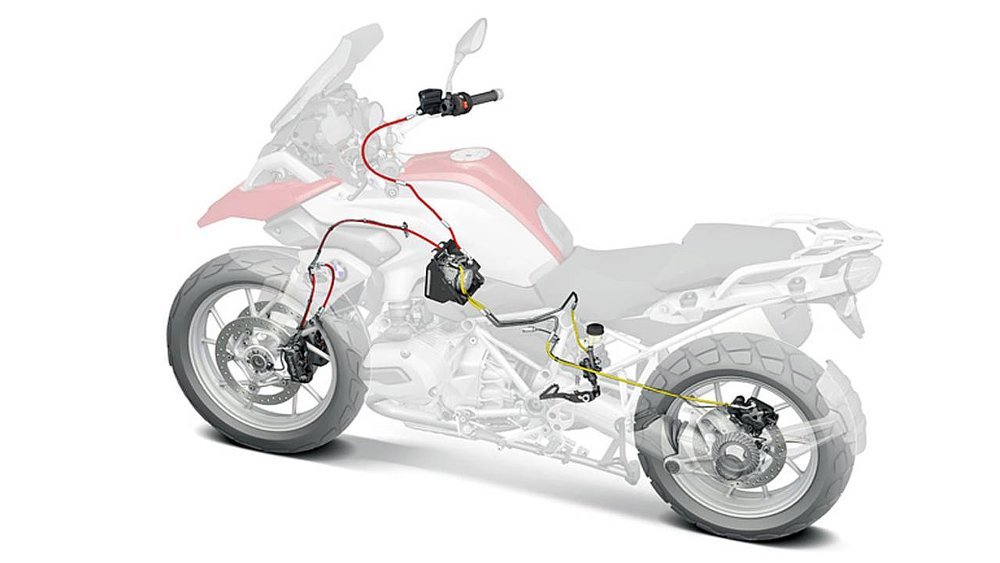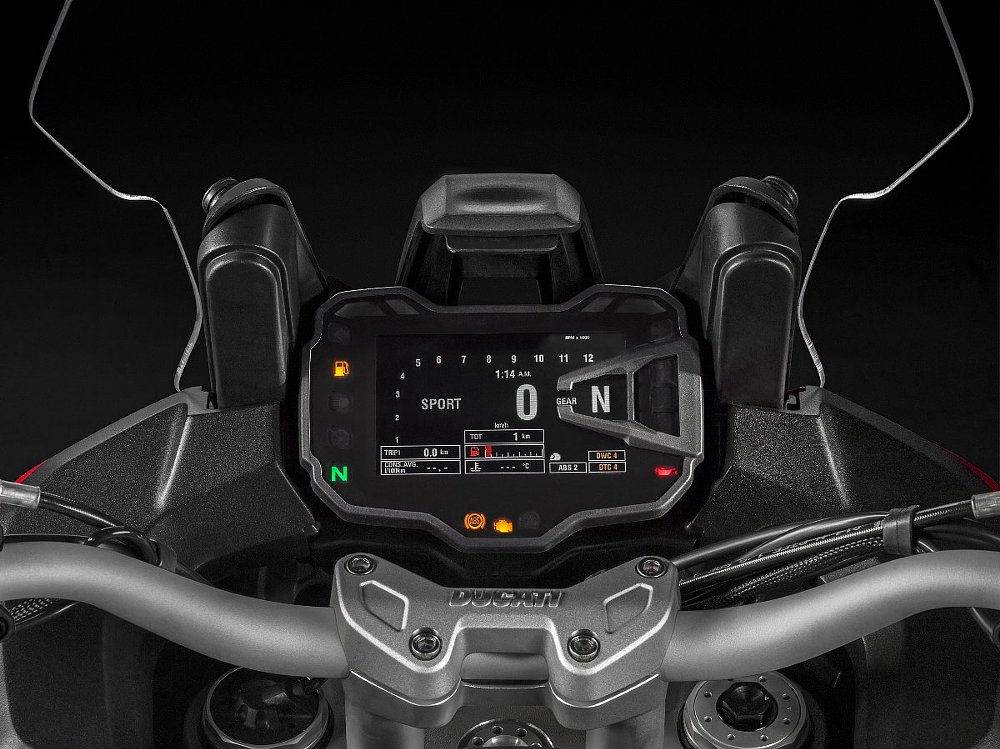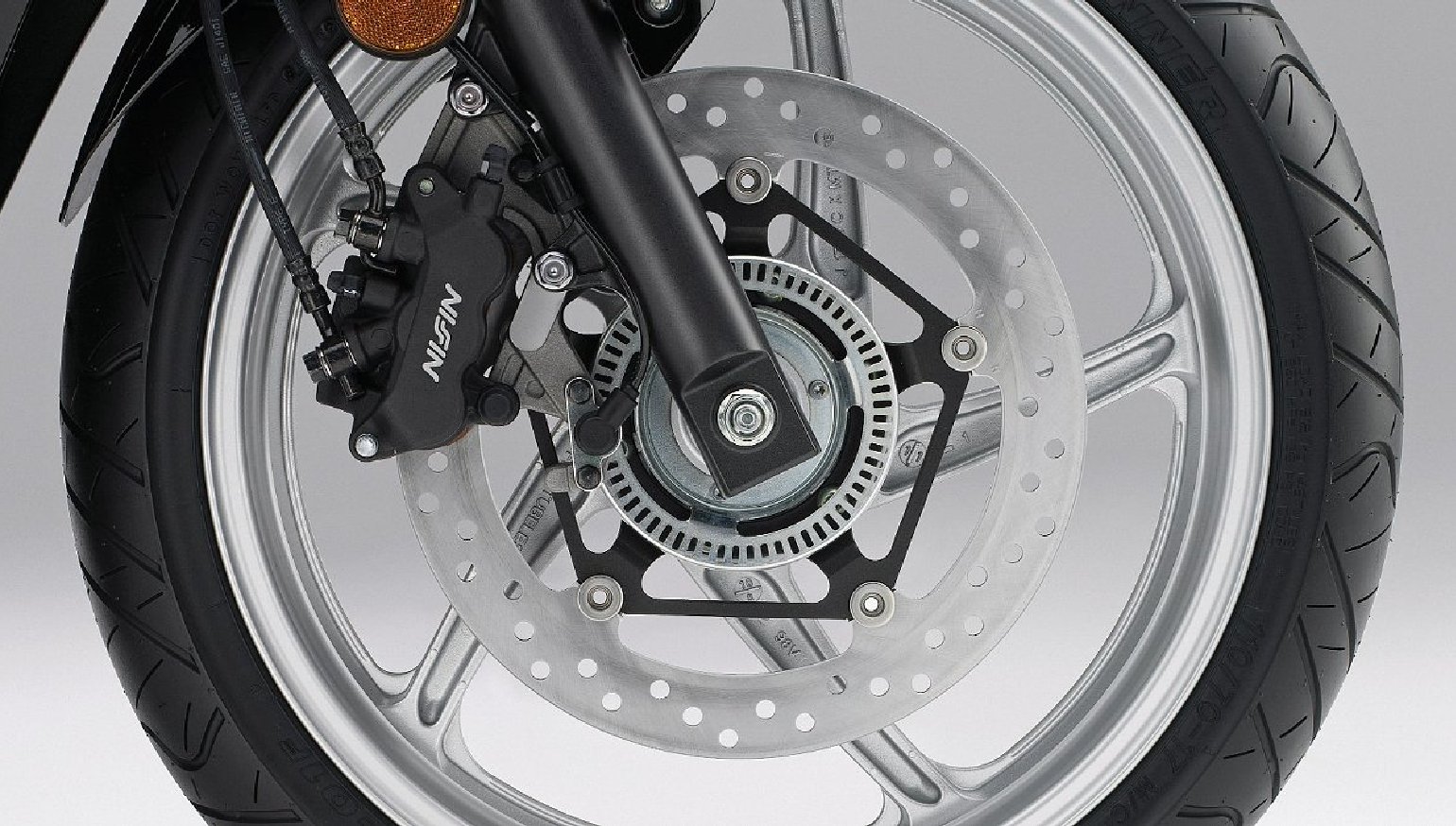ABS stands for “anti-lock brake system.”
That’s the whole system in a nutshell, really. (That’s how you know it’s a good acronym, I guess.) ABS keeps you from lockin’ the wheels up (skidding the tires) when you hammer down on your motorcycle’s brakes. It’s important to understand why, though: the purpose of ABS is to help you maintain control of your motorcycle while braking. When a tire begins to slip against the road, the handling of a motorcycle can change drastically and often unpredictably. Maintaining control of the vehicle can become a challenge, to say the least. ABS exists to help mitigate that risk. Secondarily, ABS can shorten stopping distances compared to a skid on a comparable vehicle without ABS, but that’s really only under some specific circumstances.
In order to understand how ABS does its thing, it’s critical to comprehend how conventional hydraulic brakes operate. In order to do that, I’m actually going to copypasta an edited-for-length version of some of my work from another braking article. For the sake of simplicity, we’re gonna just discuss disc brakes.
“Blaise Pascal, a 17th-century mathematician and scientist, came up with an idea that later became a scientific law. Basically, he postulated that when pressure is applied to a fluid, the fluid transmits that pressure equally in all directions… When you squeeze your brake lever or stomp your pedal, a linkage connected to your master cylinder’s piston exerts force on the juice within — brake fluid! The pressure expands equally in all directions, and the most movable item moves. That item would be the caliper piston. That expansion shoves the pads up against the rotors, dragging you to a halt.”
ABS takes this one step further by actively managing brake pressure throughout the system. Brake pressure is still exerted by the vehicle operator, but it may be modulated (rapidly reduced and reapplied) via a computerized system. (Though mechanical ABS systems have been invented, the vast majority of systems implemented in production vehicles have been electronic-hydraulic.)
So let’s talk about the parts of this system that go above and beyond the stuff on conventional brakes.

Your motorcycle is fitted with two wheel-speed sensors that monitor the rotation of each of your wheels. (You may see evidence of ABS, like a toothed reluctor ring on the brake rotor of some motorcycles, but that’s not the only way to implement a wheel-speed sensing system — some have magnetic elements in the wheel bearings.) There’s also an ABS pump chilling out somewhere, along with some valves. (The pump and valves are often plumbed into the same unit). Finally there is the controller, which is basically a computer.
Normally, the ABS system isn’t doing much if your braking input is below the lockup threshold. However, if the ABS computer thinks one or both of your wheels is moving slower than it should be relative to the speed of the other wheel (and relative to the speed of the bike, if monitored) while the brakes are applied, the vehicle actuates some valves plumbed into that wheel’s hydraulic brake system to relieve some pressure, allowing the wheel to once again turn (rather than cause the tire to skid). If the affected wheel is then moving faster than the other wheel (because you’re still screwing on the brakes!), the ABS pump then reapplies that relieved pressure. This process continues until the computer detects that both wheels are rolling along within acceptable parameters.

Easy-peasy, right? ABS is really a combination of two methods: threshold braking, which is effectively braking as hard as possible until the moment of loss of traction, then momentarily releasing pressure and re-applying it, and cadence braking (brake modulation), which is the act of pumping the brakes, effectively trading off some stopping distance for a reduced chance of wheel lockup. ABS is cadence braking brought allllllmost to the point of threshold braking. A superb rider can outbrake the computer every now and then under ideal conditions. Day in and day out, though, ABS outperforms most riders, which is why it’s mandatory on new bikes in some parts of the world.
Now you know how the system works. And, as an added “end of the article” bonus, you might also find it interesting that the ABS system, monitoring the difference between wheel speeds, is the basis of how wheelie mitigation and traction control are implemented. Those rider aids use the ABS system feedback that’s being collected and reinterpret and augment it to perform other helpful tasks for the rider. Their complex systems usually take a few other factors into account, like engine rpm and throttle angle (which are likely already being collected for fuel injection and timing purposes!) among other things. However, the core of the system is ABS.
Ain’t technology grand?










